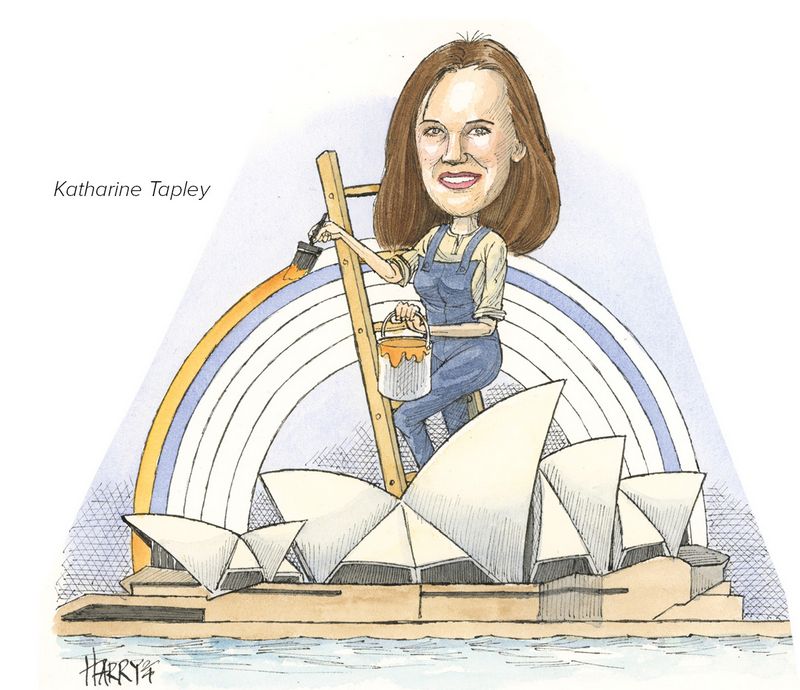Colour coordinated
ANZ broadened the spectrum of green, sustainable and social capital markets deals in Asia, and was at the forefront of a surge in issuance in Australasia, making it IFR's Asia-Pacific ESG House of the Year.
![]()
Australia and New Zealand Banking Group laid the groundwork years ago for its sustainable finance business, and it is reaping the benefits now. While banks in Europe benefited from being in the jurisdiction that set most of the global standards for ESG finance, ANZ built up its sustainability capabilities while many Australian politicians were still denying climate change.
“In Australia the private sector has had to be the leader in ESG financing,” said Katharine Tapley, head of sustainable finance at ANZ. “Now the financial sector has joined together with the government on sustainable finance, which has to be a catalyst.”
That groundwork allowed ANZ to capitalise at home and overseas, as governments, issuers and investors acknowledged the importance of a just transition – meaning that transition finance in Asia might differ from the kind used in the West.
“We are big supporters of transition. We have identified customers in our book and have been engaging with them,” said Tapley. “We have pathways in our bank to reducing emissions, and sustainable finance is a tool that can help our customers do that.”
Australia saw a boom in sustainability-linked loans, with ANZ helping issuers like Lendlease, Metcash and Growthpoint Properties, as well as providing green loans for companies such as Mulpha Australia.
ANZ led 2023’s standout ESG deal in the Australian bond market, the maiden green issue for Western Australian Treasury Corp, one of the major coal-producing states. The A$1.9bn (US$1.3bn) 10-year deal drew huge early demand, allowing the leads, in a rare occurrence for the market, to revise the guidance range tighter.
A good result would have been a minimal new issue concession. Instead, WATC priced at least 2bp inside its curve.
In addition to the greenium, WATC attracted greater foreign demand than usual, as part of a A$6.1bn final book. A typical semi-government issue might see 10%–15% participation from offshore, but overseas accounts took 24%.
In New Zealand, retail green bonds were a thriving part of the market, and ANZ led deals for diverse issuers like Auckland Council, Contact Energy and Kiwi Property.
A NZ$400m (US$250m) transaction for Wellington Sludge Minimisation Facility, which will treat solid waste captured from the wastewater treatment process, combined long-term fixed-rate debt with a medium-term floating-rate green loan supported by long-term interest rate hedging. That allowed Wellington City Council to fund the project off its balance sheet, using household levies to repay it over 33 years.
While issuance in Asia’s offshore bond market slowed, ANZ still broke new ground there. It brought the world’s first orange bond for Singapore-based Impact Investment Exchange, with proceeds earmarked to help women-led businesses support more sustainable livelihoods.
The US$50m issue was a securitisation of loans to high-impact businesses, comprising a US$45m senior tranche and US$5m first-loss subordinated tranche with a 50% guarantee from the US International Development Finance Corp and the Swedish International Development Cooperation Agency on the underlying loan portfolio. This backing helped crowd in private capital from investors including family offices, and each US$1 raised is estimated to create US$4 in social impact.
ANZ was also joint global coordinator’s on Pertamina Geothermal Energy’s US$500m debut green bond, the first from an Indonesian state-owned company, and joint bookrunner on Export-Import Bank of Korea’s US$1bn 10-year issue which marked South Korea’s first offshore blue bond. While the Kexim blue bond is aligned to the International Capital Market Association’s green bond principles, the leads also made sure it conformed to the UN’s blue economy principles, future-proofing it ahead of the introduction of blue bond principles.
“Asia continues unabated in terms of demand for sustainable finance and we are seeing increasing sophistication,” said Tapley.
ANZ itself printed a €1bn (US$1.1bn) Tier 2 issue to finance lending related to the UN’s sustainable development goals.
The bank’s sustainable finance capabilities are now crucial to winning business in capital markets.
“If we were not having these conversations around ESG we would not have that ability to dominate the bond and loan markets,” said Tapley. “It’s a ticket to the dance; you need that to be competitive.”
To see the digital version of this report, please click here
To purchase printed copies or a PDF of this report, please email shahid.hamid@lseg.com in Asia Pacific & Middle East and leonie.welss@lseg.com for Europe & Americas.










